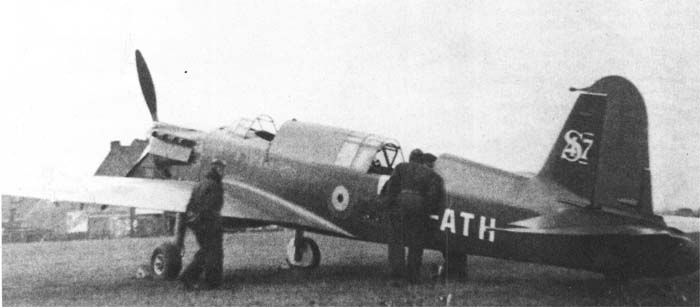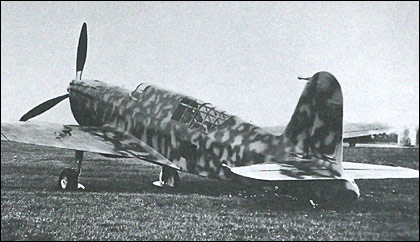
In October 1937, the Belgian aircraft manufacturer Société Anonyme Belge de Constructions Aéronautiques (SABCA) made a marketing agreement with the Italian company Caproni, with SABCA selling some of Caproni's military aircraft in certain markets, including the Caproni Ca.135, Ca.310 and the Ca.312, which were to be designated SABCA S.45bis, S.46 and S.48 respectively. As part of this agreement, Caproni were to develop a replacement for the Belgium Air Force's Fairey Fox biplanes, which were used as two-seat fighters and reconnaissance aircraft, but were obsolete.

The task of designing the new type for SABCA, the Caproni Ca 335 Maestrale, was given to Chief Engineer Cesare Pallavicino, who based the design on his earlier A.P.1 attack aircraft. It was a low-winged cantilever monoplane of mixed construction, with a metal skinned steel-tube fuselage and wood and fabric wings, powered by a single Hispano-Suiza 12Ycrs V12 engine. It had a hydraulically actuated retractable tailwheel undercarriage, with the mainwheels retracting backwards into the wing.
The pilot and observer were provided with individual, widely separated cockpits, with the observer having defensive armament of a single machine gun, and the pilot firing a Hispano-Suiza HS.404 moteur-canon firing through the propeller hub and two wing mounted machine guns, a small bomb bay housing two 50 kg bombs, while a further ten 50 kg bombs could be carried under the wings.
The Ca 335 prototype was built at Caproni's Ponte San Pietro factory, making its maiden flight there on 16 February 1939. It was then dismantled and sent to SABCA's factory at Brussels by train. After reassembly, it flew again on 19 September 1939. Initial testing was successful, resulting in SABCA purchasing a license for manufacture of the Ca 335, and demonstrating it, now designated SABCA S.47, to officials of the Belgian Ministry of Defence and representatives of a number of other nations.

While the Belgian Air Force were impressed by the S.47, and had a requirement for 24 of them, SABCA's factory was busy with orders for 41 Breguet 693s for the Belgian Air Force and for France, and 10 Koolhoven F.K.58s for France, delaying a formal order being placed.
On 14 March 1940, the prototype was being demonstrated to the French Armee de l'Air at Orléans when it was damaged in a minor landing accident. It had not been repaired when the Germans invaded France and the Low Countries, stopping SABCA's production plans. The prototype S.47 was captured by the advancing German forces on 13 June 1940. Attempts by Caproni to reclaim the S.47 were unsuccessful, it remaining in France until 1943, eventually being scrapped

General characteristics
Crew: two
Length: 10.6109 m
Wingspan: 13.2017 m
Height: 3.20 m
Wing area: 23.80 m2
Empty weight: 2,250 kg
Gross weight: 3,240 kg (reconnaissance mission)
Max takeoff weight: 3,350 kg
Powerplant: 1 × Hispano-Suiza 12Ycrs liquid-cooled V12 engine, 640 kW (860 hp) (take-off power)
Propellers: 3-bladed bladed constant speed
Maximum speed: 501 km/h at 4,200 m
Range: 1,576 km at 4,000 m (reconnaissance mission)
Endurance: 4 h 30 s
Service ceiling: 9,500 m
Time to altitude: 2,000 m in 3 min 30 s, 6,000 m in 15 min 20 s
Armament: 1× 20 mm Hispano-Suiza HS.404 firing through propeller hub two 7.62 mm FN Browning machine guns in wing, 1× FN Browning machine gun in rear cockpit
Bombs: 200 kg under wings and fuselage
Ei kommentteja:
Lähetä kommentti
Kaikenlaiset kommentit ovat tervetulleita.